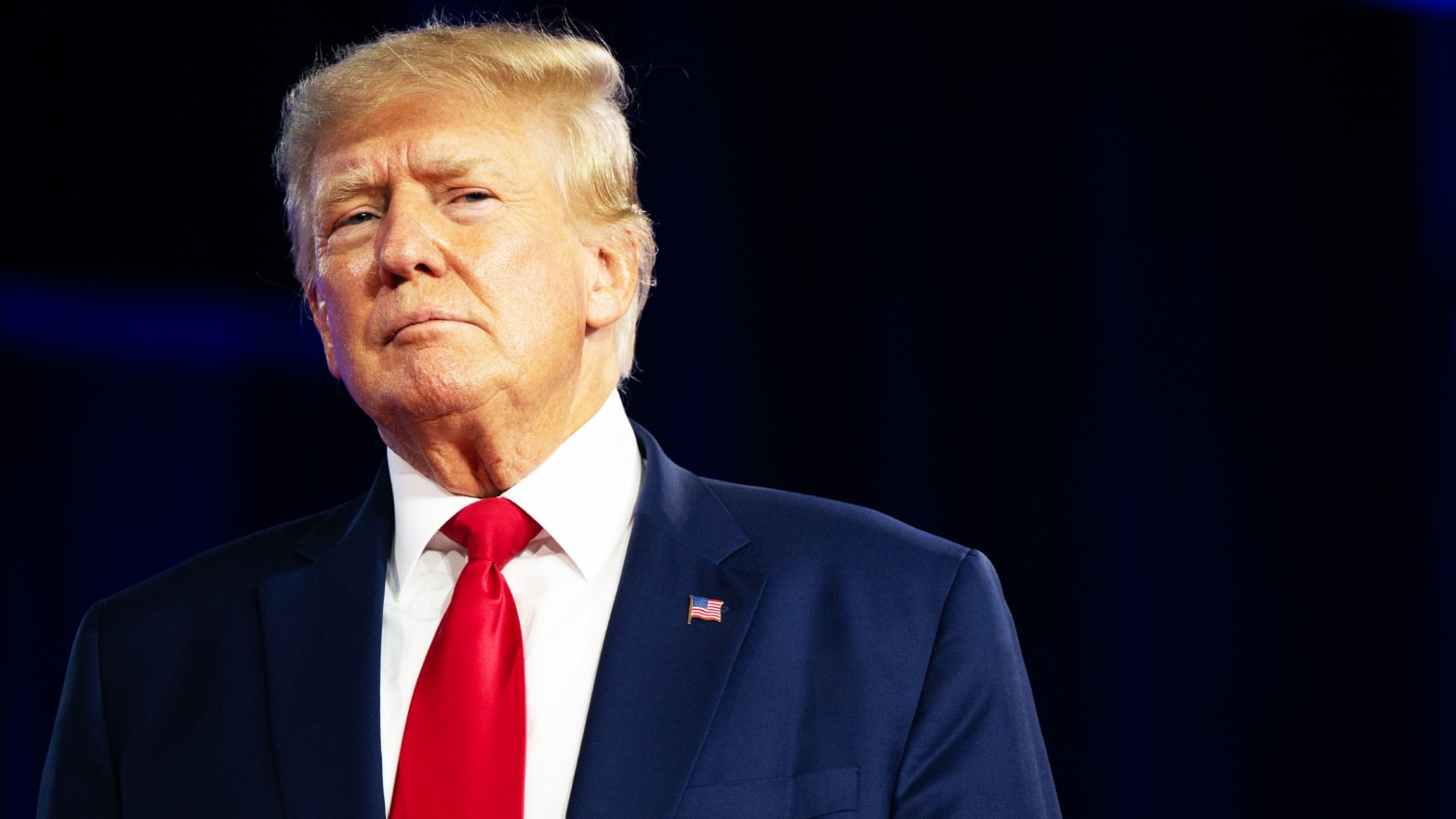The Department of Justice revealed on Friday just how former President Donald Trump guarded some of the nation’s sensitive spy material: casually mixing up seven “TOP SECRET” government documents and two dozen classified documents with news magazines, gifts, books, and his wife’s clothes.
And curiously, the DOJ’s more complete inventory included “43 empty folders with ‘CLASSIFIED’ banners.”
In an eight-page document, the DOJ listed what the FBI seized from Trump’s oceanside Mar-a-Lago estate, with descriptions that hint at the careless manner in which the former president left state secrets lying around his South Florida club.
FBI special agents found at least two government documents marked “Secret” and one marked “Confidential” in what the DOJ has previously deemed “the 45 Office,” a popular spot for MAGA-loving celebrities and grifters where Trump sits behind a faux Resolute Desk like the one he once had at the White House. The DOJ had previously only described these records as classified in some capacity, noting they were found in a desk drawer next to Trump’s expired passports.
Trump, who lost his re-election bid in 2020, is under federal investigation for illegally taking government records with him when he left the White House the following year—then somehow altering or destroying those documents in what could be an attempt to disrupt that probe.
The latest scandal traces back to the way the National Archives and Records Administration, which catalogs each president’s legacy by safeguarding their important papers, couldn’t get Trump to turn over missing documents in 2021. When Trump’s lawyers failed to intercede, NARA referred the case to federal prosecutors. Then, earlier this year, Trump’s team gave the DOJ additional classified records and assured investigators that everything had been handed over. The feds discovered that was a lie during the FBI raid on Aug. 8.
Federal prosecutors are weighing potential criminal charges for violations of the Espionage Act because of the way Trump is accused of unsafely storing information that puts the nation’s security at risk—and normally never leaves tightly controlled government offices.
At the direction of Attorney General Merrick Garland, the DOJ previously released a vague and heavily redacted list of items that were taken from the South Florida mansion last month. But the newly released inventory goes into more detail, revealing just how Trump and his staff intermingled some of the nation’s spy material with mundane personal items.
For example, the DOJ claims FBI special agents recovered a box from Trump’s personal office where they found 99 news magazines and press articles—alongside seven government documents marked “TOP SECRET,” 15 marked “SECRET” and two marked “CONFIDENTIAL.”
Curiously, FBI special agents found “43 empty folders with ‘CLASSIFIED’ banners” and “28 empty folders labeled ‘Return to Staff Secretary/Military Aide.’” It’s unclear what happened to the many government secrets that would have been inside those folders. It’s possible that they merely contained the classified documents Trump had previously turned over to NARA or the ones he later gave to the DOJ.
Notably, nothing on the inventory list indicates that FBI special agents came across any documents that specifically dealt with the topic of U.S. nuclear weapons—a point of contention for Trump. In recent days, he has complained about rumors that the DOJ was spurred to raid his mansion, in part, out of a concern that he had mishandled sensitive information about the nation's nuclear arms. A May 11 federal grand jury subpoena specifically requested that Trump fork over any documents still in his possession that, among other classified markings, were labeled S/FRD, which stands for "formerly restricted data" and deals with details about the U.S. nuclear arsenal. But the newly released inventory list doesn't list anything with that marking.
However, that doesn't actually mean documents marked "S/FRD" weren't found, according to a former government official who routinely managed classified records. The "S" stands for "SECRET," and any one of the classified documents the FBI discovered at Mar-a-Lago could be related to nukes, cautioned J. William Leonard, the retired director of the National Archives Information Security Oversight Office.

